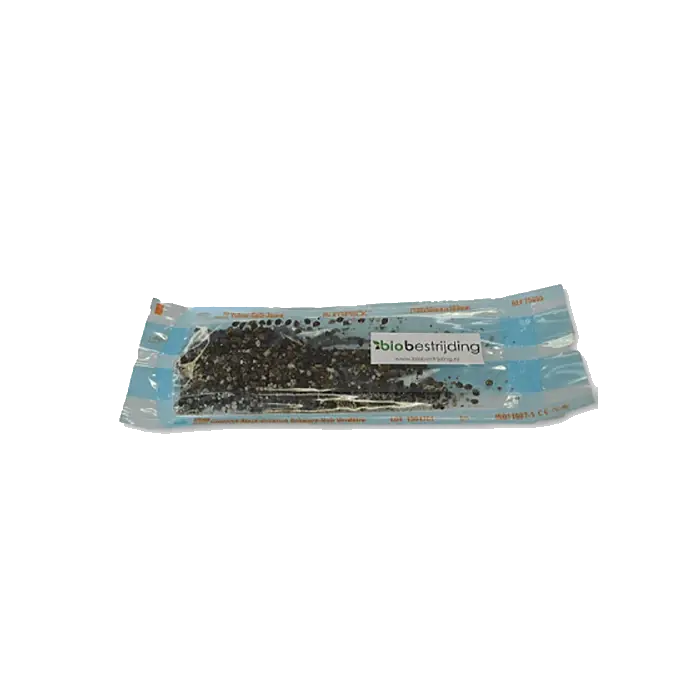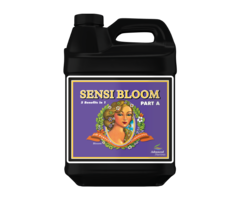BioBestrijding | Predatory mite against Varroa mite ~ Hypoaspis Miles
BioBestrijding against Varroa Mite
Attention! This product consists of live animals and is only available for order in the Netherlands or Belgium. If you order more than just Bio Fight, there will be an additional charge of € 7.95 due to dropshipping from the supplier.
Varroa mites are often controlled with chemical pesticides. These agents are effective but also have a negative impact on the bees. Biological control is a better way and for this you can use predatory mites. The Stratiolaelaps scimitus is a natural enemy of the Varroa mites and focuses only on controlling the mites and not the bees.
The Hypoaspis miles predatory mites are supplied as follows:
- One package of scattering material containing eggs, young and adult Hypoaspis miles (Stratiolaelaps scimitus) predatory mites.
- 1 package of 5000 predatory mites is sufficient for 1 hive.
What is a Hypoaspis Miles predatory mite?
The Hypoaspis miles is a soil predatory mite also known as Stratiolaelaps scimitus. This predatory mite targets a wide range of insects and is widely used in horticulture but is useful as a natural enemy of the Varroa mite. The Hypoaspis miles is a light brown-beige predatory mite and about 0.8 - 1 mm in size, the predatory mite is in all stages of its life about the same in appearance. This predatory mite occurs naturally in large parts of Europe and is a soil predator. This means that it lives in the top layer of soil up to 4 cm deep and can move quickly through and across the soil. This predatory mite feels at home in moist (potting) soil, the humidity is therefore important for proper development and control. The Hypoaspis thrives best at a humidity level of about 70%.
Life cycle
An adult Hypoaspis predatory mite lives for about 6 weeks and is active at temperatures of 10 C to 30 C. A population of this predatory mite consists of both males and females. If there is enough to eat the females lay eggs frequently, the eggs are oval shaped. The eggs hatch within 2-3 days and the young Hypoaspis nymphs are born. The nymphs develop into an adult predatory mite in about 5 to 6 days. Immediately after birth, the young nymphs are fierce predators that consume eggs and small larvae of various insects. An adult Hypoaspis can consume up to 5 prey items per day.
The Varroa Destructor (varroa mite)
The Varroa destructor (Varroa mite) is a parasitic mite that attacks the honey bees Apis cerana and Apis mellifera. The disease caused by the mites is called varroosis. The Varroa mite can only reproduce in a honey bee colony. It attaches to the bee's body (in both larvae, pupae and adults) and weakens the bee by sucking body juices. In this process, viruses spread to the bees. A large mite infestation can lead to the death of a honey bee colony, usually in late fall to early spring. The Varroa mite has a major impact on beekeeping and is considered one of the stressors contributing to higher levels of bee mortality around the world.
The adult female Varroa mite is reddish brown in color, while the male is white. Varroa mites are flat and have a bud shape. They are 1-1.8 mm long, 1.5-2 mm wide and have eight legs.
Damage to Bees
The infection and subsequent parasitic disease caused by Varroa mites is called varroosis. Sometimes the incorrect names varroatosis or varroasis are used. Varroa destructor feeds on the body juices of larvae, pupae and adult bees which already makes them extra vulnerable, but in addition the mite (among other things through the bite wounds made) transmits diseases such as DWV and IAPV to the bees.
An infection of bee brood by Varroa mite results in bees with lower weight, lower protein content and shorter lifespan. This is especially important for winter bees because they need to survive for a long time to get through the winter and need their protein supply to do so. Most beekeepers therefore apply some form of varroa control.
Quantity required
In our experience 5,000 predatory mites per hive are sufficient for optimal control of Varroa mite. Keep a close eye on the activity of the predatory mites after several weeks, weekly inspection of the predatory mites is recommended. You can inspect the activity of the predatory mites as follows: Take some soil from the closet and put it on a white sheet/paper. Look at the material with a magnifying glass to see if there are still living predatory mites. If you can still find predatory mites then it is sufficient. It is possible that the predatory mites die out because there is not enough food or due to weather conditions. If no predatory mites can be found we recommend reintroducing predatory mites provided the temperature allows it (e.g. it should not freeze!).
Important for a good control is to create a pleasant place for the predatory mites. If the predatory mites have a habitat where they can live, the control will follow automatically. The predatory mites actively seek Varroa mites. If the Varroa mites are stung and fall down the predatory mites crawl directly on top of them. If the bees enter the hive the predatory mites crawl on the bees and fight the Varroa mites there, thus getting the predatory mites into the warm center of the hive. In some cases the bees even seek out the predatory mites. They know that when they are near the predatory mites they will not be bothered by the Varroa mites. Read more about the correct use of predatory mites against Varroa mites on this page.
The predatory mite proceeds as follows, it approaches the Varroa mite and stings it with its snout. The predatory mite administers poison to the Varroa mite, which kills the Varroa mite. Once the Varroa mite is dead, the predatory mite will suck body fluids from the mite as food, then the hungry predatory mite will look for new prey.
Release instructions
- Upon receipt, release as soon as possible, predatory mites are not durable.
- Open the bag containing the litter and predatory mites. Distribute the material evenly in the container at the bottom of the hive.
- The predatory mites feel at home in slightly moist soil, it is recommended to keep the soil moist by means of an automatic drip system or by spraying the soil regularly. Make sure the soil is not too wet!
- The Hypoaspis predatory mites are active from 10 degrees but only come into action at a soil temperature of 15 degrees. The optimum temperature is between 20 and 30 degrees. 26 degrees is the most ideal for the development.
Storage advice
Biological control agents are living animals and have a (very) short life span and should therefore be introduced into the crop as soon as possible after receipt. Storage can negatively influence the quality and is only possible under the conditions mentioned below.
- Storage life: 1-2 days
- Storage temperature: 8-10C
- Store in the dark and flat




